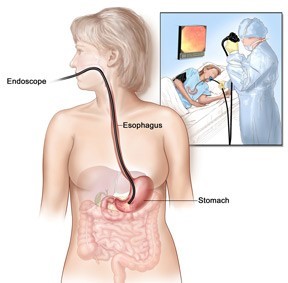A nurse is reviewing client confidentiality with a group of newly licensed nurses. Which of the following situations should the nurse include as an example of a breach in confidentiality?
A nurse discusses a client's postoperative complications during a shift report.
A social worker reads a client's chart as a follow-up to a requested consultation.
A facility risk manager includes information from a client's medical record in a written report.
A nurse tells the chaplain that a client has a new diagnosis of cancer.
The Correct Answer is D
In this scenario, the nurse disclosed sensitive medical information about the client's diagnosis to someone who is not directly involved in the client's care or treatment. This disclosure violates the client's right to privacy and confidentiality.
Nursing Test Bank
Naxlex Comprehensive Predictor Exams
Related Questions
Correct Answer is A
Explanation
Whenever a medication error occurs, it should be documented in an incident report. The purpose of the incident report is to document the details of the event, including what happened, why it happened, and what was done to prevent it from happening again. Incident reports are not part of the client's medical record and are not used for disciplinary action. They are used for quality improvement and risk management purposes.
The nursing care plan is a document that outlines the client's nursing care needs and interventions. It is not the appropriate place to document a medication error.
The controlled substance inventory record is used to document the administration and dispensing of controlled substances. It is not the appropriate place to document a medication error.
The provider's progress notes document the provider's assessment, diagnosis, and treatment plan for the client. They are not the appropriate place to document a medication error.


Correct Answer is B
Explanation
Before any invasive procedure, it is essential to ensure that the client has provided informed consent. Informed consent involves providing the client with information about the procedure, its risks, benefits, and alternatives, allowing them to make an informed decision about their healthcare. The nurse should verify that the client has been adequately informed about the esophagogastroduodenoscopy procedure and has given consent before proceeding.

Informing the client about the procedure duration of 60 minutes is not a priority action. While it is helpful to provide the client with information about the procedure, the specific duration of the procedure may vary depending on various factors, and it does not require immediate attention prior to the procedure.
Ensuring that the client's bladder is full is not necessary for an esophagogastroduodenoscopy procedure. The procedure involves examining the upper gastrointestinal tract and does not involve the bladder or urinary system.
Administering an oral contrast solution is not typically required for an esophagogastroduodenoscopy procedure. Oral contrast solutions are commonly used for other
diagnostic imaging procedures, such as computed tomography (CT) scans or barium studies, but not for esophagogastroduodenoscopy.
Whether you are a student looking to ace your exams or a practicing nurse seeking to enhance your expertise , our nursing education contents will empower you with the confidence and competence to make a difference in the lives of patients and become a respected leader in the healthcare field.
Visit Naxlex, invest in your future and unlock endless possibilities with our unparalleled nursing education contents today
Report Wrong Answer on the Current Question
Do you disagree with the answer? If yes, what is your expected answer? Explain.
Kindly be descriptive with the issue you are facing.
